Guatemalan Hilachas: Unraveling the Delicious Rags of Guatemalan Cuisine
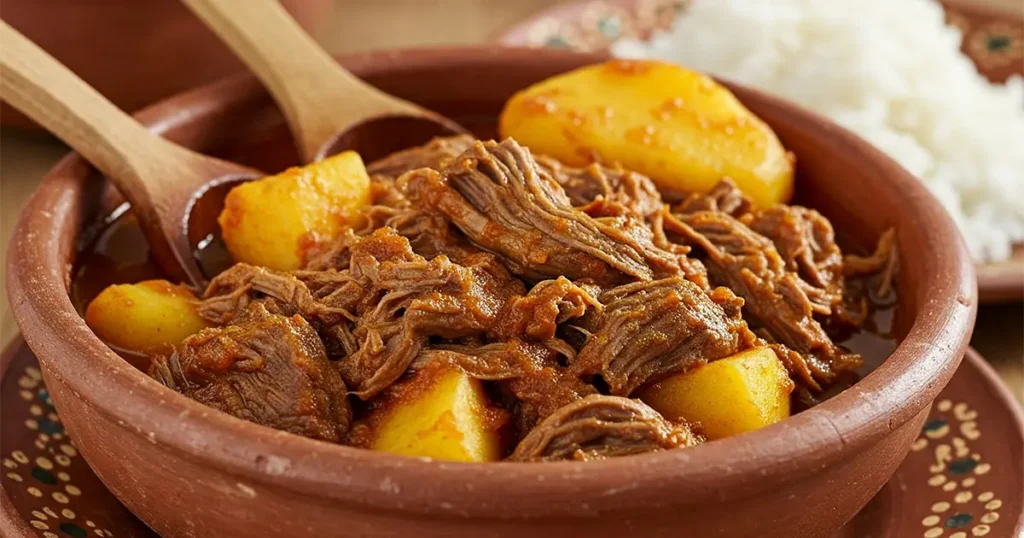
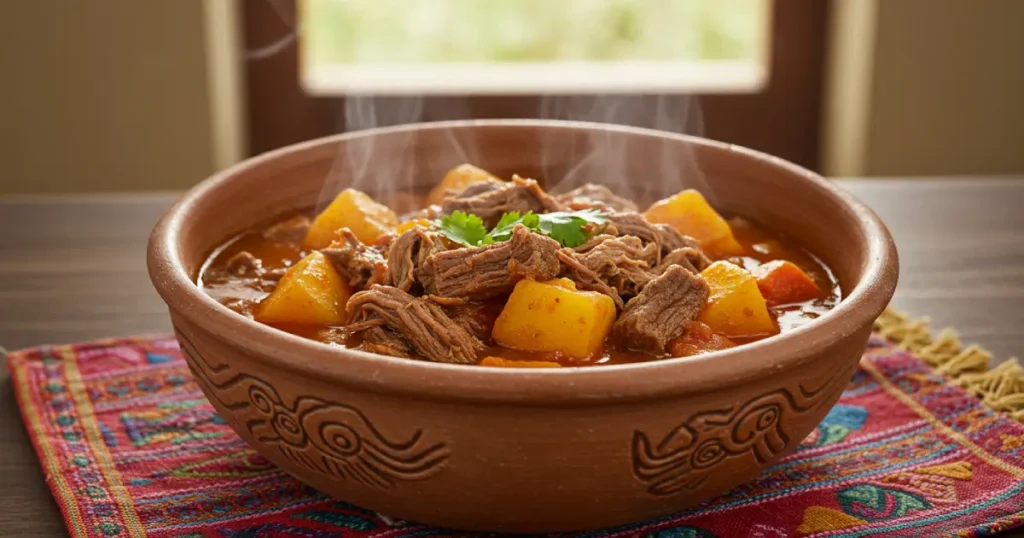
The name hilachas itself, literally translating to rags, whimsically describes the tender strands of beef that are the star of this beloved hilachas guatemalan food. This slow-cooked marvel, simmered in a flavorful tomato-based broth with potatoes, carrots, and a characteristic touch of spice, is a staple in Guatemalan homes and a must-try for anyone seeking an authentic taste of the nation's culinary heritage.
While variations of shredded beef stews are found throughout Latin America, guatemalan hilachas possesses a unique character, shaped by local ingredients and generations of family recipes. It’s a dish that tells a story of comfort, tradition, and the art of transforming simple ingredients into something truly special.
The Origins and Cultural Roots of Hilachas
The story of hilachas is intertwined with Guatemala's complex history. While shredded meat preparations existed in indigenous cuisines, the specific form of hilachas we know today likely evolved with the introduction of beef by the Spanish during the colonial era. Cattle were not native to the Americas, and their arrival brought significant changes to local diets and cooking methods.
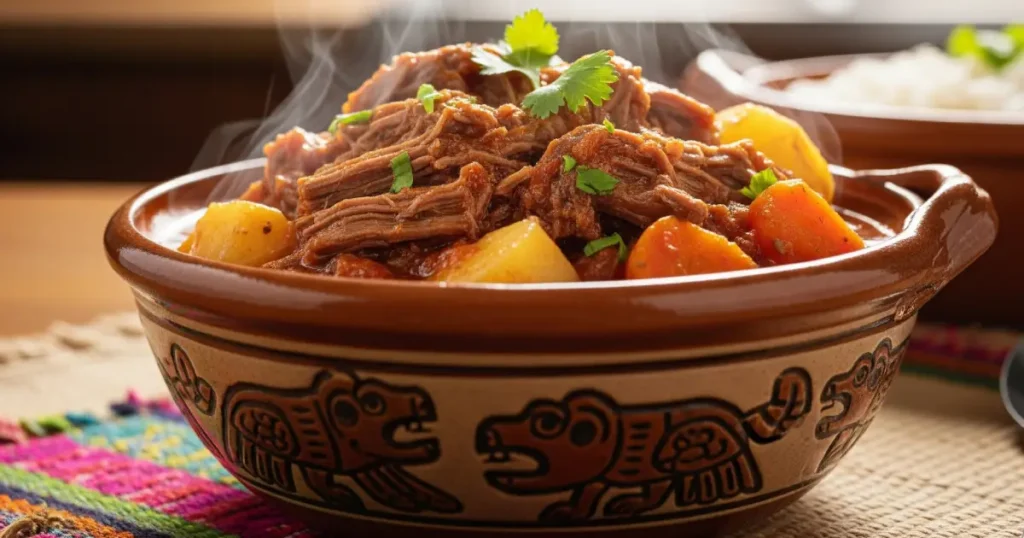
Spanish Influence and Indigenous Adaptation
The concept of slow-cooking tougher cuts of meat until tender enough to shred is a technique found in various culinary traditions, including Spanish cuisine. Dishes like the famous "ropa vieja" (old clothes) from Spain, particularly popular in the Canary Islands and later Cuba, share a striking resemblance to hilachas in both name and preparation. It's highly probable that Spanish colonists brought these cooking methods and the concept of shredded beef stews to the Americas.
However, hilachas guatemala is not a mere replica of a Spanish dish. Indigenous Mayan culinary traditions, with their sophisticated use of local chiles, tomatoes, tomatillos, and aromatic herbs, played a crucial role in shaping the unique flavor profile of Guatemalan hilachas. The native ingredients were ingeniously incorporated, adapting the European concept to the Mesoamerican palate. The use of specific local chiles, for instance, gives Guatemalan hilachas its characteristic subtle kick and depth of flavor, distinguishing it from its counterparts in other regions.
A Dish of Comfort and Tradition
Over centuries, hilachas became deeply ingrained in Guatemalan home cooking. It evolved into a dish synonymous with comfort, nourishment, and family. Often prepared for Sunday lunches or special family gatherings, the slow simmering process fills homes with an inviting aroma, building anticipation for the hearty meal to come. It's a dish that grandmothers are famed for, with recipes passed down through generations, each family perhaps having its own subtle variations and secret touches that make their hilachas recipe unique.
The affordability of tougher cuts of beef, which become wonderfully tender through the slow-cooking process, also contributed to its popularity across different social strata. Hilachas represents a culinary tradition of making the most of available ingredients, transforming them with care and patience into a deeply satisfying meal.
What Exactly is Guatemalan Hilachas? Deconstructing the Dish
At its core, guatemalan hilachas is a masterpiece of texture and flavor. Understanding its key components helps appreciate the artistry involved in this seemingly simple stew. The "hilachas guatemaltecas ingredients" work in harmony to create a balanced and unforgettable dish.
The Star: Shredded Beef ("Rags")
The defining feature of hilachas is, of course, the beef. The term "hilachas" or "rags" perfectly describes the appearance of the meat after it has been slow-cooked until incredibly tender and then meticulously shredded. The most common cut of beef used is flank steak (falda) or brisket, as these tougher, well-marbled cuts break down beautifully over long cooking times, yielding succulent, flavorful strands. The process involves simmering the beef in water or a light broth with aromatics until it can be easily pulled apart with forks. This shredded beef not only provides the primary protein but also absorbs the rich flavors of the sauce it's later simmered in.
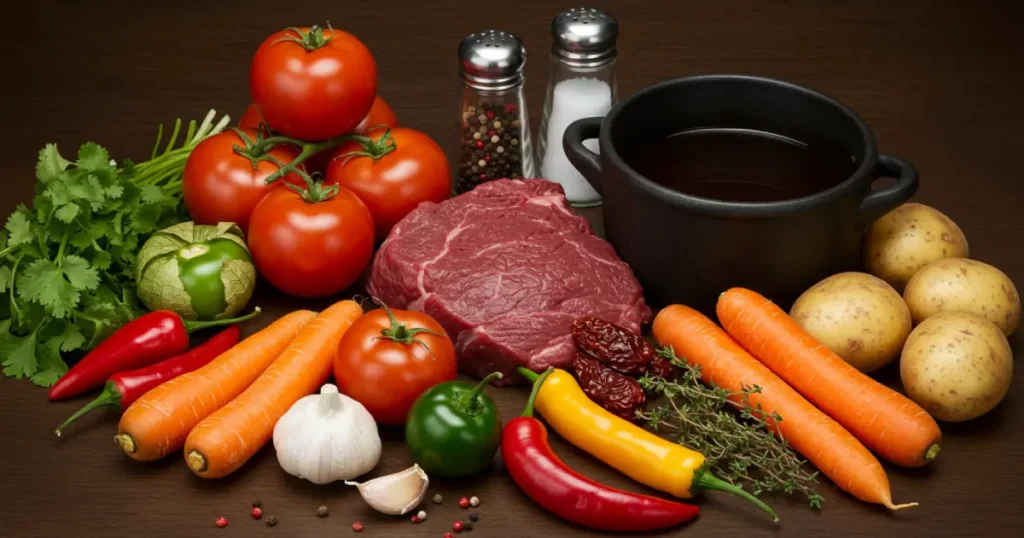
The Rich Tomato-Based Broth with a Kick
The soul of hilachas guatemala lies in its vibrant, tomato-based broth, or "recado." This is far more than a simple tomato sauce; it’s a complex concoction of flavors:
- Tomatoes: Ripe tomatoes form the foundation, providing sweetness, acidity, and color. Often, these are roasted or charred before blending to add a smoky depth.
- Tomatillos (Miltomate): Green tomatillos, a staple in Guatemalan cuisine, are frequently included. They contribute a tangy, slightly citrusy note that balances the richness of the beef and the sweetness of the tomatoes.
- Chiles: A crucial element for that "slight kick of spice." The types of chiles can vary, but common choices include:
- Chile Guaque (Guajillo): A mild to medium-hot dried chile that imparts a beautiful red color and a slightly fruity, smoky flavor.
- Chile Pasa (Pasilla): A dark, wrinkled dried chile with a richer, more complex flavor, often with notes of fruit or cocoa and mild heat.
- Chile Cobanero: For those desiring more heat, a touch of the potent, smoky chile cobanero might be added, though this is more characteristic of dishes like Kak'ik. Generally, hilachas is not overwhelmingly spicy but has a pleasant warmth. The chiles are typically toasted, rehydrated, and blended into the sauce.
- Aromatics: Garlic and onion are essential, often roasted alongside the tomatoes to mellow their flavors and add sweetness.
Key Vegetables: Potatoes and Carrots
To make the stew heartier and add textural contrast, diced potatoes and carrots are commonly included. These vegetables are typically added to the simmering broth after the shredded beef and sauce have been combined. They cook until tender, absorbing the flavors of the recado and complementing the richness of the beef. Some recipes might also call for green beans or peas, though potatoes and carrots are the most traditional.
Aromatic Spices and Seasonings
Beyond the primary ingredients, a blend of spices and herbs enhances the complexity of the hilachas guatemalan food. Common hilachas guatemaltecas ingredients for seasoning include:
- Cilantro: Fresh cilantro is often blended into the sauce or added towards the end of cooking for a burst of freshness.
- Thyme (Tomillo) and Bay Leaf (Laurel): These herbs are frequently used to infuse the broth with subtle aromatic notes during the simmering process.
- Salt and Pepper: Essential for bringing all the flavors together.
- Consomé (Bouillon Powder): Some cooks may add a touch of beef or chicken bouillon powder for an extra layer of savory depth, though purists might rely solely on the flavors developed from the meat and fresh ingredients.
The careful balance of these components results in a stew that is rich but not heavy, spicy but not overpowering, and deeply comforting.
Crafting Hilachas Guatemaltecas: A Culinary Guide
Making authentic hilachas guatemala is a rewarding process that, while requiring patience, is not overly complicated. Following a traditional hilachas recipe or a guatemalan hilachas recipe involves several key steps to ensure tender beef and a deeply flavorful sauce.
Selecting the Right Cut of Beef
The foundation of great hilachas is the beef. Choose a cut that is well-suited for slow cooking and shredding:
- Flank Steak (Falda): This is the most traditional and highly recommended cut. Its long muscle fibers shred beautifully into the characteristic "rags."
- Brisket (Pecho): Another excellent option, brisket has a good amount of connective tissue that breaks down during slow cooking, resulting in tender, flavorful meat.
- Chuck Roast (Morcillo or Lomo de Aguja): While it can be used, it may not shred as easily into long strands as flank or brisket, but it will still be tender and flavorful.
Aim for about 1.5 to 2 pounds of beef for a family-sized meal.
The Art of Shredding
- Initial Cook: Place the beef in a large pot with enough water to cover. Add half an onion, a couple of garlic cloves, a bay leaf, and salt. Bring to a boil, then reduce heat, cover, and simmer gently for 2-3 hours, or until the beef is very tender and can be easily pierced with a fork. Using a pressure cooker can significantly reduce this time to about 30-45 minutes.
- Cool and Shred: Once cooked, remove the beef from the broth (reserve the broth!) and let it cool slightly until it's comfortable to handle. Then, using two forks or your fingers, shred the beef along the grain into long, thin strands. This is what gives hilachas its signature texture.
Building the Flavorful Broth (Recado)
This is where the magic happens for the hilachas guatemala recipe:
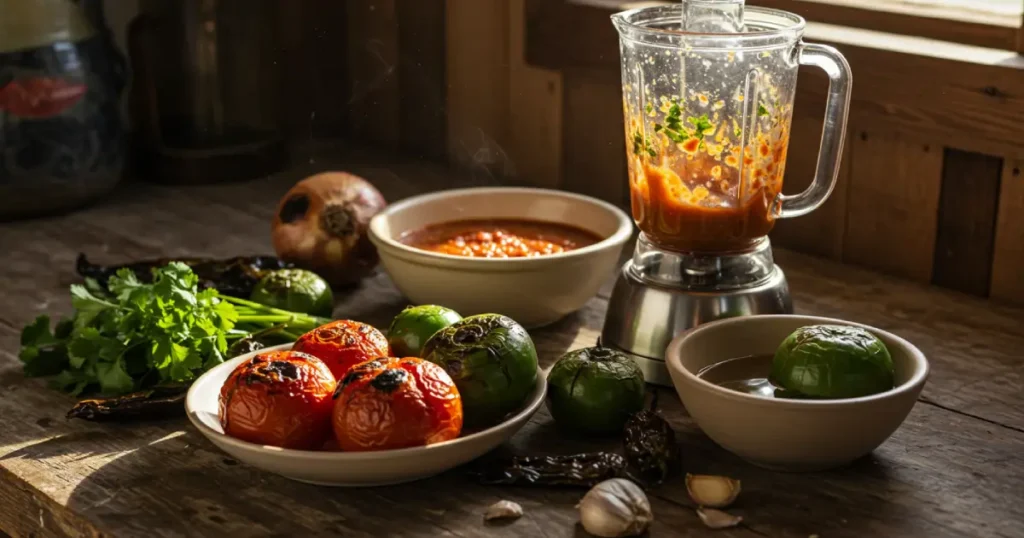
- Roast/Char Vegetables: On a comal (griddle) or under a broiler, roast 3-4 ripe Roma tomatoes, 2-3 tomatillos (miltomates, husks removed), 1/2 an onion, and 2-3 cloves of garlic until their skins are blistered and slightly charred. This step adds a crucial smoky depth.
- Prepare Chiles: Toast 2-3 chile guaques and 1-2 chile pasas (stems and seeds removed for milder flavor) lightly on a dry skillet until fragrant. Be careful not to burn them, as this can make them bitter. Rehydrate the toasted chiles in hot water for about 15-20 minutes until softened.
- Blend the Sauce: Combine the roasted vegetables, rehydrated chiles (with a bit of their soaking water), a handful of fresh cilantro, and any other preferred spices (like a pinch of dried thyme) in a blender. Blend until smooth. For a finer sauce, you can strain it through a sieve.
Simmering to Perfection
- Sauté (Optional Soffrito): In a large pot or Dutch oven, heat a little oil. Some recipes call for sautéing some finely chopped onion and garlic before adding the blended sauce for an extra layer of flavor.
- Combine and Cook Sauce: Pour the blended recado into the pot. Cook over medium heat, stirring occasionally, for about 10-15 minutes to allow the flavors to meld and the sauce to thicken slightly.
- Add Beef and Broth: Introduce the shredded beef to the simmering sauce. Add about 2-3 cups of the reserved beef cooking broth (or more, depending on desired consistency). Stir well to combine.
- Add Vegetables: Add 2-3 medium potatoes, peeled and diced, and 1-2 large carrots, peeled and sliced or diced.
- Simmer: Bring the stew to a gentle simmer. Cover and cook for another 30-45 minutes, or until the potatoes and carrots are tender and the flavors have fully melded. Stir occasionally to prevent sticking.
- Adjust Seasoning: Taste and adjust salt, pepper, or other seasonings as needed. If the sauce is too thick, add a little more reserved broth or water.
This generalized "hilachas Guatemala recipe" provides a solid framework. Many Guatemalan cooks will have their own family tweaks, perhaps adding a different spice or a specific type of local chile.
How to Serve and Enjoy Hilachas Guatemalan Food
Serving hilachas is a comforting ritual in itself. This hilachas guatemalan food is typically presented as a hearty main course, accompanied by elements that complement its rich flavors and textures.
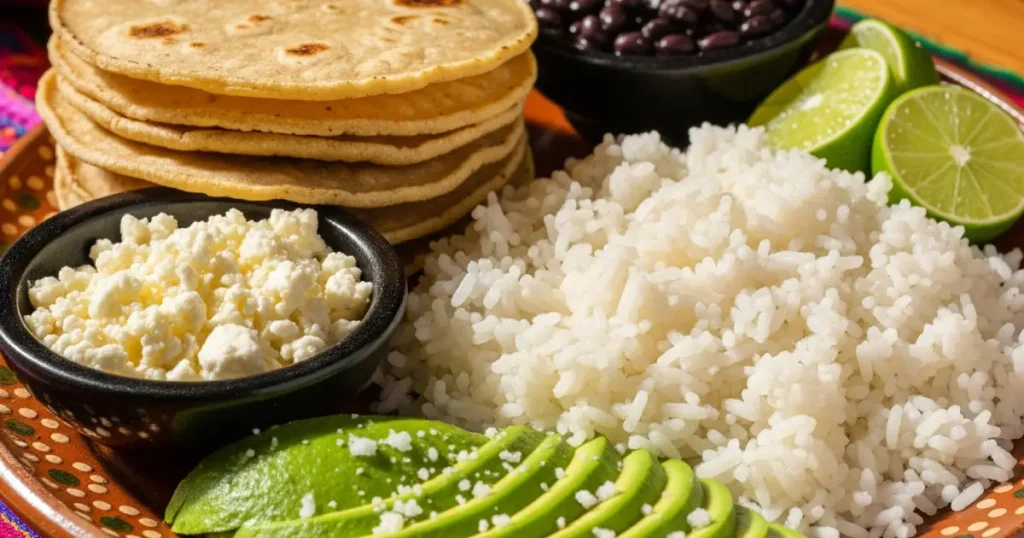
Traditional Accompaniments
- White Rice (Arroz Blanco): This is almost an obligatory side. A generous helping of fluffy white rice serves as the perfect bed for the saucy shredded beef and vegetables, soaking up the delicious broth.
- Corn Tortillas: Warm, fresh corn tortillas are essential for scooping up the hilachas or enjoying alongside. Guatemalan tortillas are typically small, thick, and made from fresh masa.
- Avocado Slices: Creamy avocado slices provide a cool, smooth contrast to the warm, savory stew. A sprinkle of salt on the avocado enhances its flavor.
- Fresh Cheese (Queso Fresco) or Hard Cheese (Queso Duro): A sprinkling of crumbled queso fresco or grated queso duro can add a salty, tangy counterpoint.
- Black Beans (Frijoles Negros): Refried black beans or whole black beans are common accompaniments to many Guatemalan meals and can be served alongside hilachas.
- Lime Wedges: A squeeze of fresh lime juice just before eating can brighten the flavors of the stew.
Presentation and Garnishes
Hilachas is typically served in a deep bowl or on a plate with a generous portion of rice. A final garnish of freshly chopped cilantro or parsley can add a touch of color and freshness. Some may also offer a small dish of picamas or a bottled hot sauce for those who desire extra spice.
The presentation is usually unfussy and rustic, emphasizing the comforting, home-style nature of the dish. It’s a meal meant to be savored and enjoyed with family and friends.
Hilachas Beyond Guatemala: Variations in Central America and Beyond
While this article focuses on guatemalan hilachas, it's important to acknowledge that shredded beef stews with similar characteristics are enjoyed throughout Central America and other parts of Latin America. Each country and even regions within countries often have their own unique spin on the recipe.
Similarities to Ropa Vieja
The most well-known cousin to hilachas is "ropa vieja," which also translates to "old clothes." Ropa vieja is considered a national dish of Cuba and is also popular in the Canary Islands (Spain), Puerto Rico, the Dominican Republic, Colombia, Venezuela, and other Caribbean and Latin American nations. While the core concept of slow-cooked shredded beef in a tomato-based sauce is similar, the specific spices, vegetables, and accompaniments can vary significantly. For example, Cuban ropa vieja often includes bell peppers and olives and is typically drier than the more stew-like Guatemalan hilachas.
Regional Twists
- Honduras: In Honduras, a similar dish might be called "carne desmenuzada" or "ropa vieja" and could include different local spices or vegetables like chayote.
- El Salvador: Salvadoran versions might incorporate local herbs or a different chile profile.
- Mexico: While Mexico has many distinct shredded beef dishes like "tinga" (which usually involves chipotle chiles and is often served on tostadas), some regional stews might resemble hilachas. For example, "carne deshebrada" is a general term for shredded beef that can be prepared in various sauces.
These variations highlight the adaptability of this culinary concept and the richness of Latin American gastronomy. The common thread is the transformation of humble ingredients into a flavorful and satisfying meal through slow cooking and careful seasoning. However, for those seeking the specific comfort of hilachas guatemala, the unique balance of local chiles, tomatillos, and traditional accompaniments sets it apart.
Where to Experience Authentic Hilachas in Guatemala
For travelers and locals alike seeking an authentic taste of hilachas guatemalan food, there are several avenues to explore.
- Home Kitchens: The most authentic hilachas is often found in Guatemalan homes, prepared with love from family recipes. If you have the opportunity to be invited for a home-cooked meal, it's an experience not to be missed.
- Traditional Restaurants (Comedores): Many "comedores" – small, often family-run eateries that serve traditional Guatemalan fare – will feature hilachas on their menu, especially as a "plato del día" (dish of the day). These offer a genuine taste of home-style cooking at affordable prices.
- Specialized Restaurants: Some restaurants specialize in traditional Guatemalan cuisine. The provided snippet mentions 7 Caldos, which has locations in Guatemala City and Antigua, as a place to try hilachas. Restaurants like these often take pride in preparing classic dishes with high-quality ingredients, offering a reliable and delicious experience.
- Local Markets: Sometimes, food stalls within larger markets might offer freshly prepared hilachas, providing a vibrant and bustling atmosphere to enjoy this traditional stew.
When looking for authentic hilachas guatemala, don't be afraid to ask locals for their recommendations. They will often point you towards hidden gems where you can savor this beloved dish in its truest form. Exploring different establishments can also give you a sense of the subtle variations in the hilachas recipe from one cook to another.
Hilachas: More Than Just a Stew – Its Place in Guatemalan Homes
Hilachas holds a special place in the hearts and homes of Guatemalans. It’s more than just a collection of hilachas guatemaltecas ingredients; it’s a dish imbued with memories, tradition, and a sense of belonging.
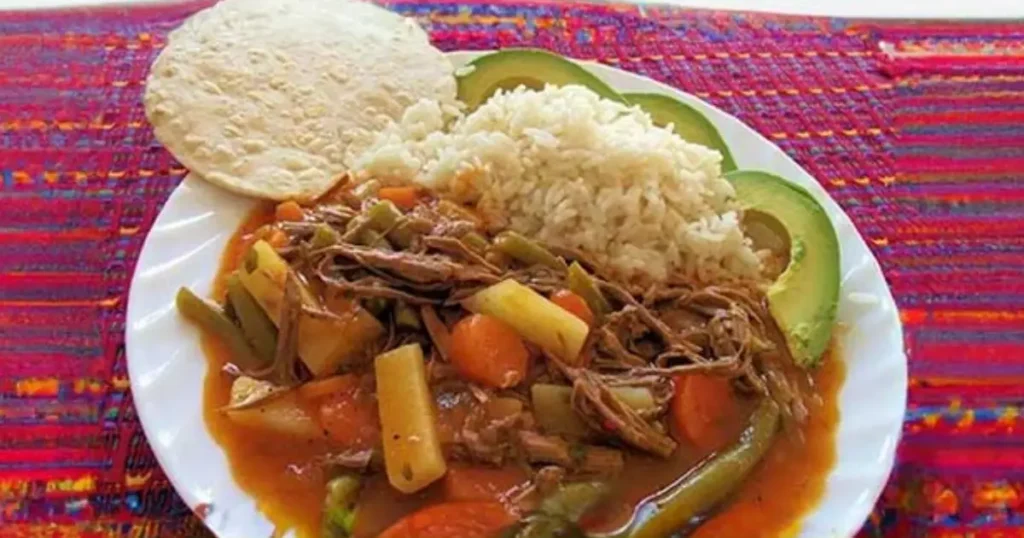
A Family Favorite
For many Guatemalans, hilachas is a quintessential comfort food. Its warm, savory broth and tender shredded beef evoke feelings of home and nostalgia. It’s a dish often associated with weekend family meals, where the slower pace allows for the time needed to prepare it properly. The aroma wafting from the kitchen as hilachas simmers is a familiar and welcome sign of a delicious meal to come. Children grow up with the taste of their mother's or grandmother's hilachas, creating a strong emotional connection to the dish.
Hilachas at Celebrations and Everyday Meals
While some complex Guatemalan dishes like Pepián or Kak’ik are often reserved for very special occasions or ceremonial events, hilachas enjoys a versatile role. It can be special enough for a family celebration, a birthday, or when hosting guests, yet it's also accessible enough to be enjoyed as a particularly satisfying weekday or weekend meal when time permits. Its hearty and nutritious nature makes it a complete meal, especially when served with rice and tortillas.
The act of sharing hilachas is an act of sharing love and tradition. It represents the warmth of Guatemalan hospitality and the importance of family and food in the culture. It's a culinary staple that continues to be cherished and passed down, ensuring that the delicious "rags" of hilachas guatemala will continue to grace Guatemalan tables for generations.
The Enduring Comfort of Guatemalan Hilachas
Hilachas, the beloved shredded beef stew of Guatemala, is a testament to the country's rich culinary heritage. From its evocative name meaning "rags" to its deeply satisfying flavors derived from tender beef, a vibrant tomato-chile broth, and hearty vegetables, it is a dish that truly comforts and nourishes. More than just a hilachas recipe, it is a cultural touchstone, a hilachas guatemalan food that speaks of family traditions, colonial influences, and indigenous flavors seamlessly woven together.
Whether simmered patiently in a home kitchen or savored in a bustling local "comedor," guatemalan hilachas offers an authentic taste of the nation's soul. Its enduring popularity ensures that this delightful stew, with its perfectly shredded beef and rich, subtly spicy sauce, will continue to be a cherished part of Guatemala's gastronomic identity for years to come, inviting everyone to unravel its delicious secrets.

Leave a Reply